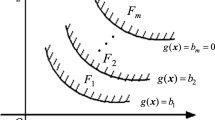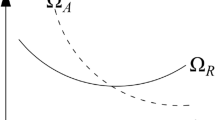Abstract
Reliability analysis methods based on active learning Kriging (ALK) model have been extensively researched during the past few years. However, the estimation of a rare event with low failure probability remains an issue in this field. To address this issue, this paper proposes a brand-new strategy to fuse ALK model with importance sampling (IS) method. In the first stage, a series of concentric rings in the standard normal space is configured. Starting from a small ring in safe region, ALK model is built and utilized to judge whether failure region arises. The ring is expanded and ALK model is updated step by step until the failure region firstly emerges. The firstly emerging failure regions are the most probable failure regions (MPFRs) with large contribution to the failure probability. In the second stage, IS samples populating all the obtained MPFRs are generated and ALK model is updated by treating the IS samples as candidate points. Compared with relevant methods, all the training points in the first stage are all the optimal points chosen by ALK model. They have remarkably improved the sign prediction of a Kriging model. Therefore, much more training points are saved in the second stage than other methods. The proposed method is able to unbiasedly estimate the failure probability with efficiency outperforming existing relevant methods. The performance of the proposed method is demonstrated by four case studies.








Similar content being viewed by others
References
Au S, Beck JL (1999) A new adaptive importance sampling scheme for reliability calculations. Struct Saf 21:135–158
Au S-K, Beck JL (2001) Estimation of small failure probabilities in high dimensions by subset simulation. Probab Eng Mech 16:263–277
Bect J, Ginsbourger D, Li L, Picheny V, Vazquez E (2012) Sequential design of computer experiments for the estimation of a probability of failure. Stat Comput 22:773–793
Bichon BJ, Eldred MS, Swiler LP, Mahadevan S, McFarland JM (2008) Efficient global reliability analysis for nonlinear implicit performance functions. AIAA J 46:2459–2468
Bourinet J-M, Deheeger F, Lemaire M (2011) Assessing small failure probabilities by combined subset simulation and support vector machines. Struct Saf 33:343–353
Cadini F, Santos F, Zio E (2014) An improved adaptive kriging-based importance technique for sampling multiple failure regions of low probability. Reliab Eng Syst Saf 131:109–117
Chen Z, Qiu H, Gao L, Li X, Li P (2014) A local adaptive sampling method for reliability-based design optimization using Kriging model. Struct Multidiscip Optim 49:401–416
Der Kiureghian A, Dakessian T (1998) Multiple design points in first and second-order reliability. Struct Saf 20:37–49
Ditlevsen O, Madsen HO (1996) Structural reliability methods. Wiley, New York
Dubourg V, Sudret B, Bourinet J-M (2011) Reliability-based design optimization using kriging surrogates and subset simulation. Struct Multidiscip Optim 44:673–690
Dubourg V, Sudret B, Deheeger F (2013) Metamodel-based importance sampling for structural reliability analysis. Probab Eng Mech 33:47–57
Echard B, Gayton N, Lemaire M (2011) AK-MCS: an active learning reliability method combining Kriging and Monte Carlo simulation. Struct Saf 33:145–154
Echard B, Gayton N, Lemaire M, Relun N (2013) A combined importance sampling and kriging reliability method for small failure probabilities with time-demanding numerical models. Reliab Eng Syst Saf 111:232–240
Fauriat W, Gayton N (2014) AK-SYS: An adaptation of the AK-MCS method for system reliability. Reliab Eng Syst Saf 123:137–144
Gaspar B, Teixeira A, Soares CG (2017) Adaptive surrogate model with active refinement combining Kriging and a trust region method. Reliab Eng Syst Saf 165:277–291
Haeri A, Fadaee MJ (2016) Efficient reliability analysis of laminated composites using advanced Kriging surrogate model. Compos Struct 149:26–32
Hu Z, Mahadevan S (2016) Global sensitivity analysis-enhanced surrogate (GSAS) modeling for reliability analysis. Struct Multidiscip Optim 53:501–521
Jones DR, Schonlau M, Welch WJ (1998) Efficient global optimization of expensive black-box functions. J Glob Optim 13:455–492
Kim S-H, Na S-W (1997) Response surface method using vector projected sampling points. Struct Saf 19:3–19
Kurtz N, Song J (2013) Cross-entropy-based adaptive importance sampling using Gaussian mixture. Struct Saf 42:35–44
Lee TH, Jung JJ (2008) A sampling technique enhancing accuracy and efficiency of metamodel-based RBDO: Constraint boundary sampling. Comput Struct 86:1463–1476
Li X, Qiu H, Chen Z, Gao L, Shao X (2016) A local Kriging approximation method using MPP for reliability-based design optimization. Comput Struct 162:102–115
Luo Y, Kang Z, Li A (2009) Structural reliability assessment based on probability and convex set mixed model. Comput Struct 87:1408–1415
Papadopoulos V, Giovanis DG, Lagaros ND, Papadrakakis M (2012) Accelerated subset simulation with neural networks for reliability analysis. Comput Methods Appl Mech Eng 223:70–80
Perrin G (2016) Active learning surrogate models for the conception of systems with multiple failure modes. Reliab Eng Syst Saf 149:130–136
Qin Q, Lin D, Mei G, Chen H (2006) Effects of variable transformations on errors in FORM results. Reliab Eng Syst Saf 91:112–118
Ranjan P, Bingham D, Michailidis G (2008) Sequential experiment design for contour estimation from complex computer codes. Technometrics 50:527–541
Schueremans L, Van Gemert D (2005) Benefit of splines and neural networks in simulation based structural reliability analysis. Struct Saf 27:246–261
Sun Z, Wang J, Li R, Tong C (2017) LIF: A new Kriging based learning function and its application to structural reliability analysis. Reliab Eng Syst Saf 157:152–165
Wang Z, Wang P (2013) A Maximum Confidence Enhancement Based Sequential Sampling Scheme for Simulation-Based Design. J Mech Des 136:021006–021010
Wang Z, Wang P (2016) Accelerated failure identification sampling for probability analysis of rare events. Struct Multidiscip Optim 54:137–149
Wen Z, Pei H, Liu H, Yue Z (2016) A Sequential Kriging reliability analysis method with characteristics of adaptive sampling regions and parallelizability. Reliab Eng Syst Saf 153:170–179
Yang X, Liu Y, Gao Y, Zhang Y, Gao Z (2015) An active learning Kriging model for hybrid reliability analysis with both random and interval variables. Struct Multidiscip Optim 51:1003–1016
Yang X, Liu Y, Gao Y (2016) Unified reliability analysis by active learning Kriging model combining with Random-set based Monte Carlo simulation method. Int J Numer Methods Eng 108:1343–1361
Yang X, Liu Y, Mi C, Tang C (2018) System reliability analysis through active learning Kriging model with truncated candidate region. Reliab Eng Syst Saf 169:235–241
Youn B, Choi K, Yang R, Gu L (2004) Reliability-based design optimization for crashworthiness of vehicle side impact. Struct Multidiscip Optim 26:272–283
Yuan X, Lu Z, Zhou C, Yue Z (2013) A novel adaptive importance sampling algorithm based on Markov chain and low-discrepancy sequence. Aerosp Sci Technol 29:253–261
Zhao H, Yue Z, Liu Y, Gao Z, Zhang Y (2015) An efficient reliability method combining adaptive importance sampling and Kriging metamodel. App Math Model 39:1853–1866
Zhu Z, Du X (2016) Reliability Analysis With Monte Carlo Simulation and Dependent Kriging Predictions. J Mech Des 138:121403–121411
Acknowledgements
This work is supported by the National Natural Science Foundation of China (Grant No. 51705433, 51475386), the Fundamental Research Funds for the Central Universities (Grant No. 2682017CX028), and the Open Project Program of The State Key Laboratory of Heavy Duty AC Drive Electric Locomotive Systems Integration (Grant No. 2017ZJKF04, 2017ZJKF02).
Author information
Authors and Affiliations
Corresponding author
Rights and permissions
About this article
Cite this article
Yang, X., Liu, Y., Fang, X. et al. Estimation of low failure probability based on active learning Kriging model with a concentric ring approaching strategy. Struct Multidisc Optim 58, 1175–1186 (2018). https://doi.org/10.1007/s00158-018-1960-0
Received:
Revised:
Accepted:
Published:
Issue Date:
DOI: https://doi.org/10.1007/s00158-018-1960-0




